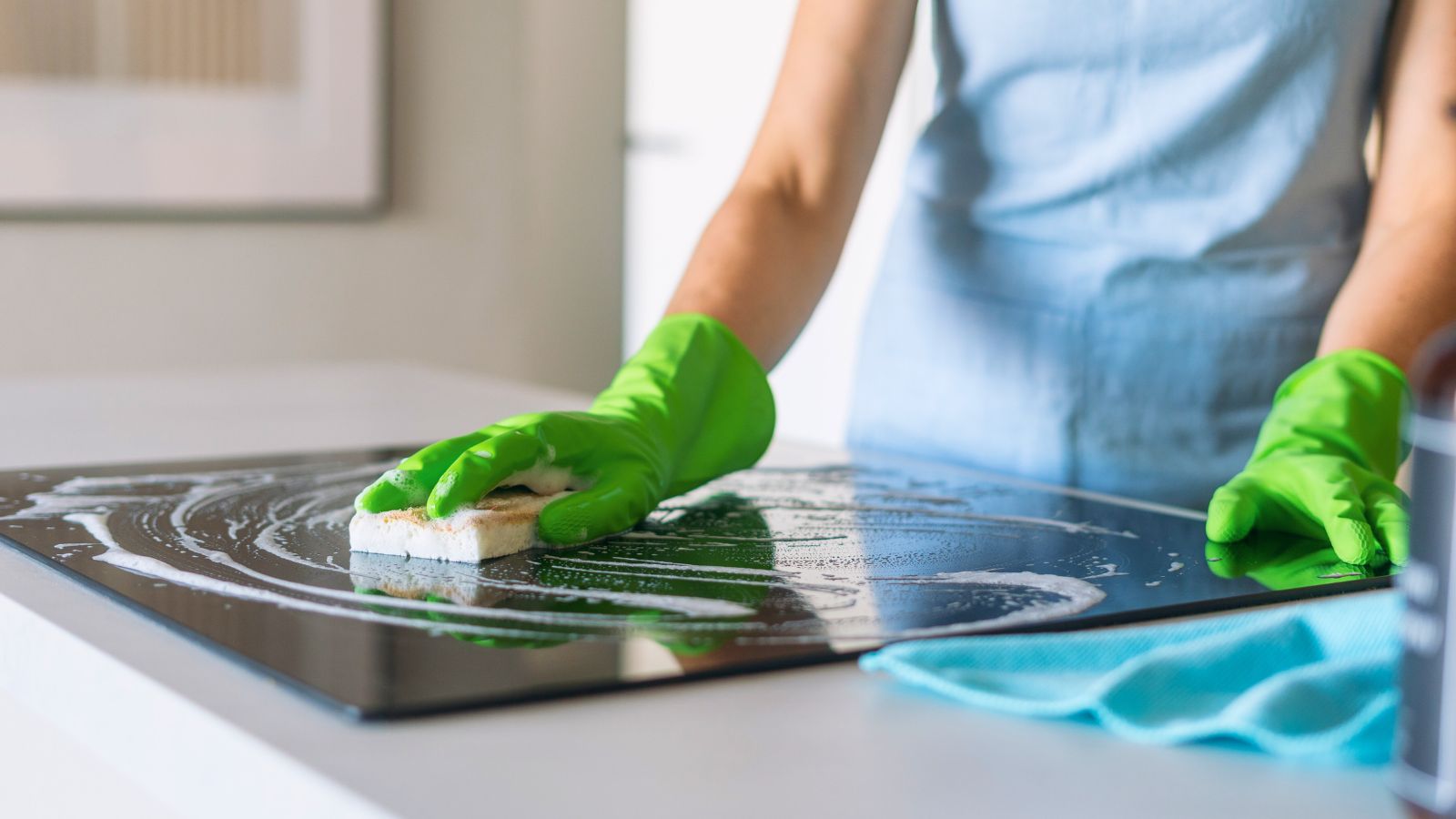No need to rip out old trim — try skirting over skirting for a quick and easy way to update your skirting boards
Experts reveal why you should do this, what types are available and how to install it
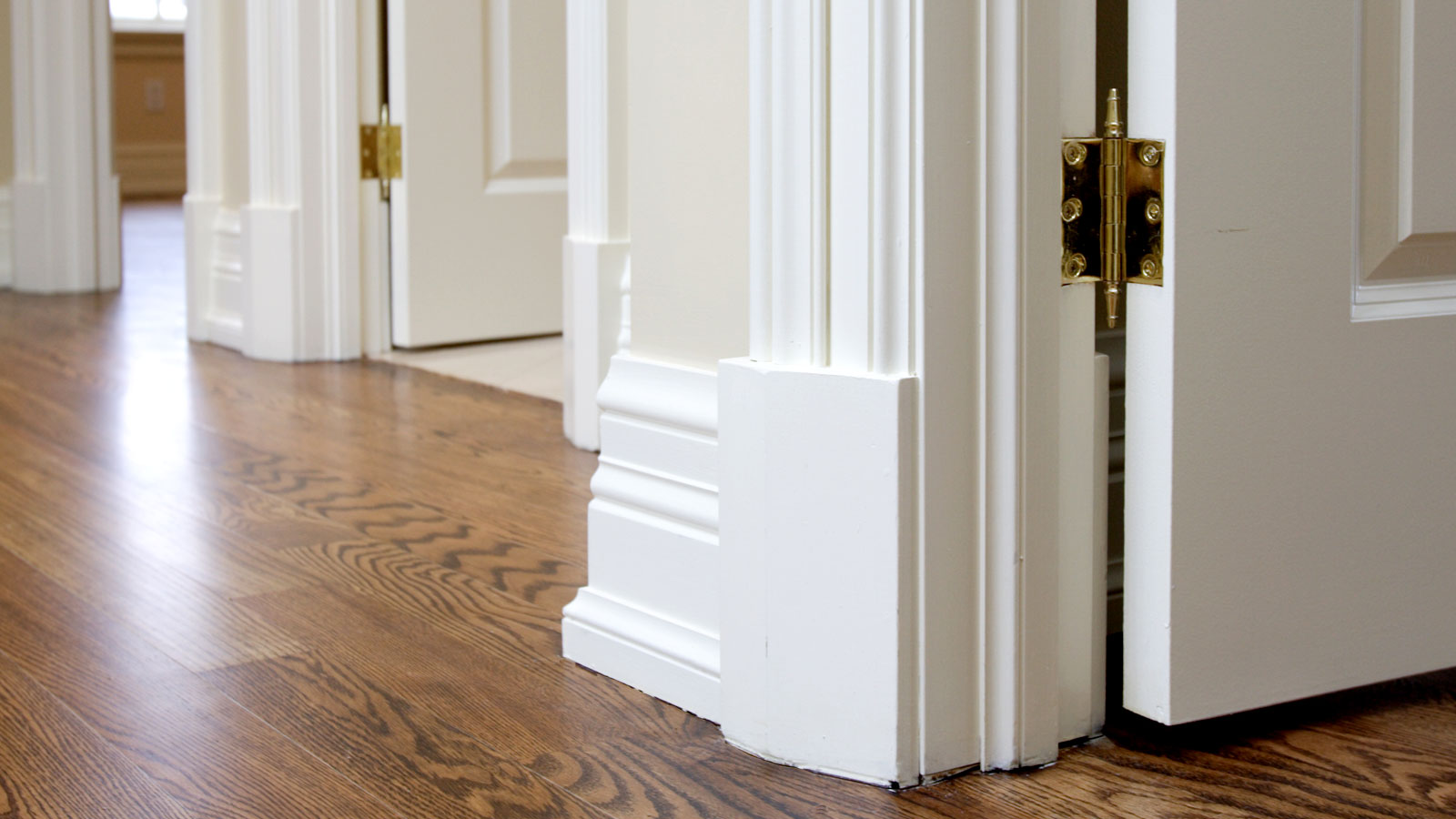
Skirting boards are made to protect the bottom of walls from knocks and kicks. Which means they endure a lot of wear and tear. You can clean and paint them regularly, but eventually they will need replacing, which is a messy and time-consuming task.
A sweet alternative to replacing or painting skirting boards is to invest in skirting over skirting. This is a quick, easy and almost mess-free alternative that any DIYer can tackle without worry.
Find out all you need to know about skirting over skirting to transform your home with a stylish new look in this guide.

Paul Kerr is a building and flooring specialist at Beatsons Building Supplies Limited, where he advises homeowners and trade professionals on durable, practical solutions for high-traffic areas like boot rooms and kitchens.
What is skirting over skirting?
There is a clue in the name, as Paul Kerr, building specialist at Beatsons Building Supplies, points out, "Skirting over skirting is exactly that, it's in essence a way of layering new skirting boards on top of pre-existing ones.” Skirting over skirting is also known by several other names, including skirting overclads, over-skirting, or, most commonly, skirting board covers.
Scott Godfrey, Carpenter and owner of Black Hammer, gives a quick summary of what they do: “Instead of removing the old boards, the covers are designed to fit neatly on top.” He adds, “Skirting board covers give the appearance of brand-new skirting without the disruption of tearing out the original.”

Scott Godfrey has over 20 years of experience in carpentry and joinery, is a master craftsman, and a successful business owner. He has extensive experience in both bespoke and large-scale projects, including luxury home builds and renovations.
The pros and cons of skirting over skirting
+ Simple to install
Introducing skirting over skirting is a much simpler process when compared with fitting a standard skirting board. Kerr says, “It's just straightforward to do, you don't need to remove the old skirting.” Godfrey adds, “Homeowners can achieve a clean, updated finish quickly, making it a popular choice in renovations where minimal upheaval is preferred.”
+ Less mess
Removing skirting boards can be a messy job, but with skirting over skirting, Kerr says, “You don't need to go through the mess of removing them from the wall and damaging the plaster already in place. Less labour, less dust, less wall damage.”
Bring your dream home to life with expert advice, how to guides and design inspiration. Sign up for our newsletter and get two free tickets to a Homebuilding & Renovating Show near you.
Godfrey adds, “The main advantage of adding skirting over skirting is that it saves considerable labour and avoids damage to walls.”
+ Quick to fit
Fitting skirting over skirting is a real time-saver. First, you don’t need to remove the old skirting board. Second, you don’t need to worry about carrying out any repairs, which can be very time-consuming, before you fix the new skirting. An added bonus of a quick fit is that a quick change in style. Godfrey says, “Whether opting for a classic ogee or torus design or going for a more contemporary square profile, the covers provide flexibility in updating the overall look.”
Try these skirting board covers for a quick makeover
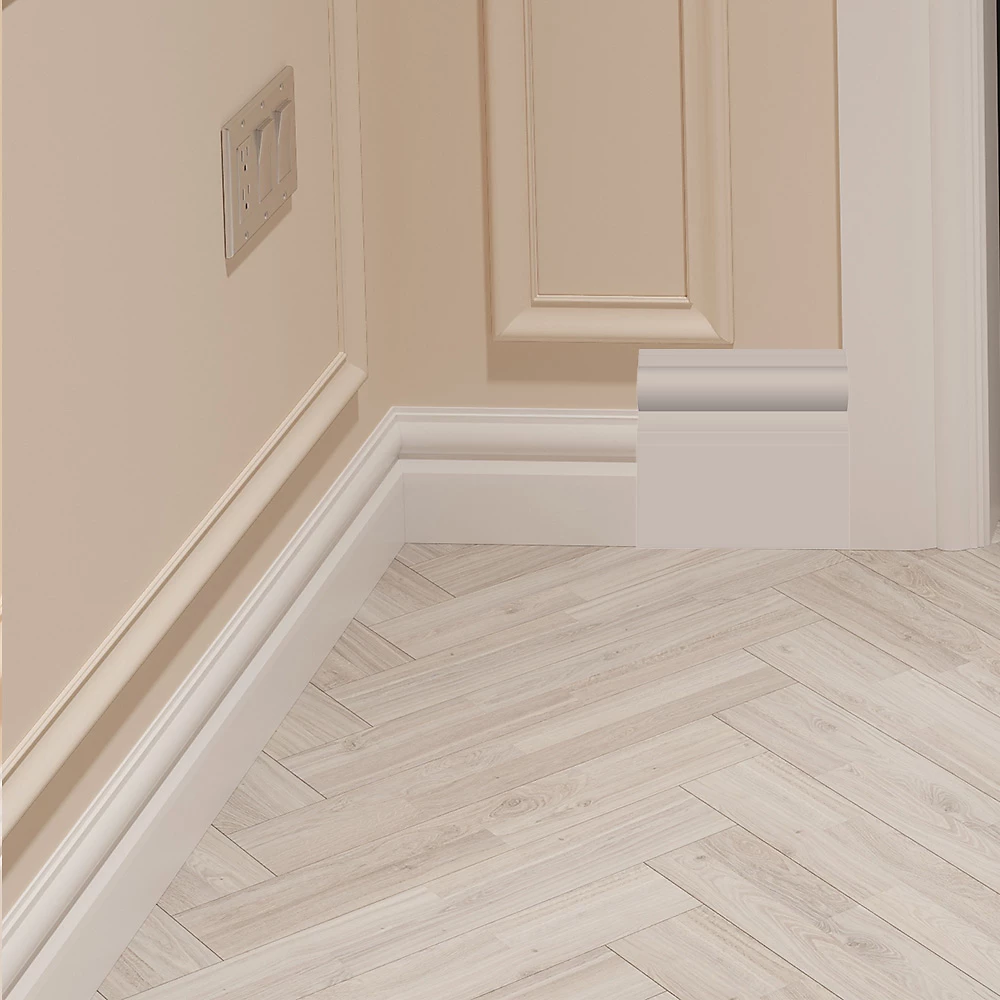
The Torus I skirting board cover is an excellent solution for covering previous skirting boards with a fresh new design. Comes pre-primed and is available in 3040/4200mm lengths.
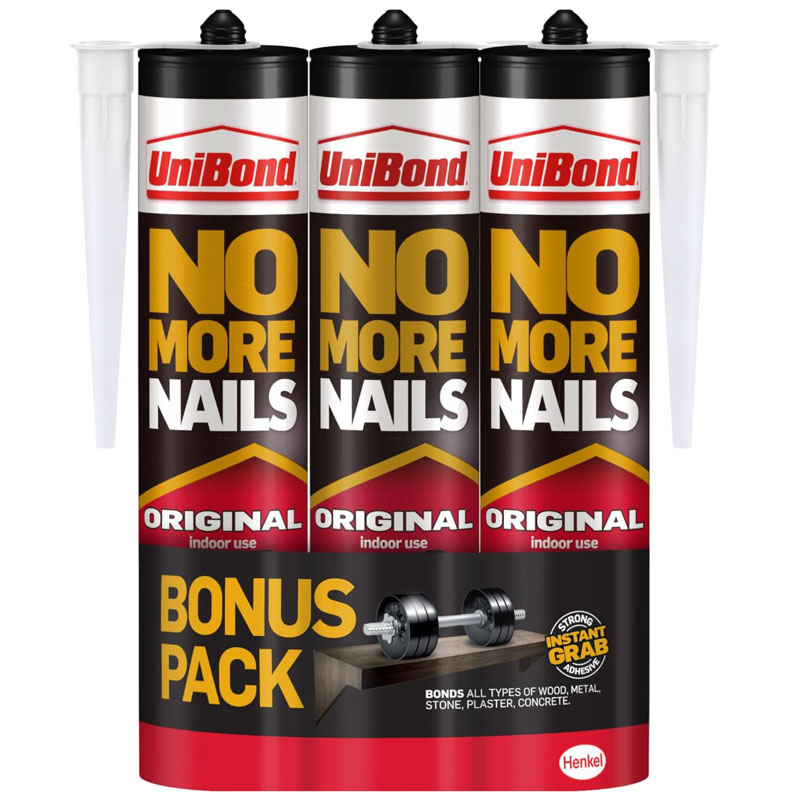
This solvent-free mount glue is ideal for heavy-duty adhesion for DIY and repair jobs and eliminates the need for nails or screws. Ideal for fixing skirting boards to wood and plaster.
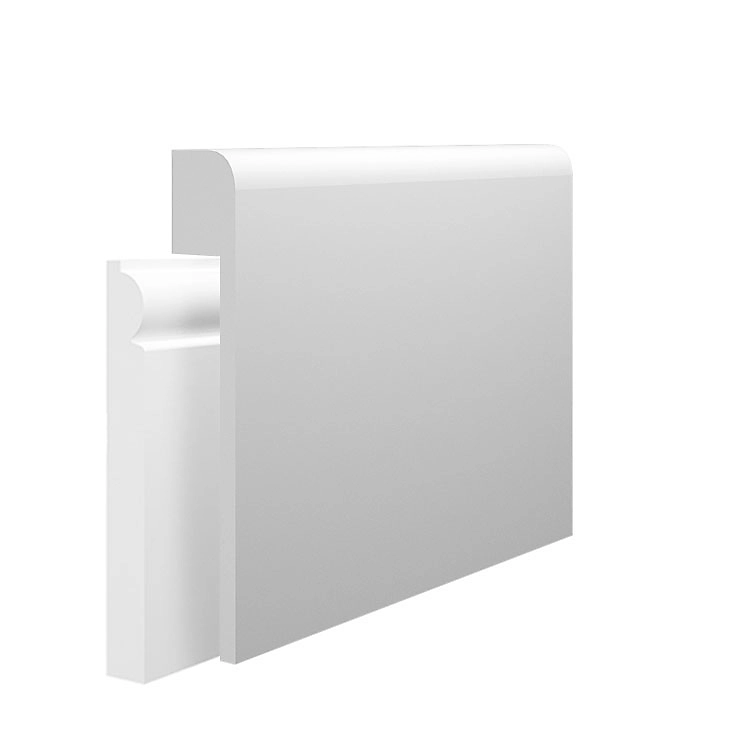
This skirting board cover fit over an existing skirting board up to 95mm in height and 19mm in thickness. Available in various sizes up to 170mm in height.
- Limited design
While there are plenty of skirting board cover choices, there aren’t as many as standard skirting, as Kerr shares, “There is also a limit on design; there aren't too many cover profiles that you can buy when compared to new skirting boards.”
- Not always a good fit
To ensure that any new skirting over skirting looks its best, the current skirting needs to be in good condition, as Kerr points out, “In cases where the current skirting is damaged or uneven, layering a cover may not sit flush and look a little out of place." This can mean more work, so weigh up costs and time between replacement and skirting over skirting. To fill any small gaps, check our guide on caulking skirting boards.
- Reduced floor space
As you might expect, adding additional skirting over the skirting can double the space the skirting takes up, as Kerr points out, “First, you will be taking up a bit more space in the room; this may not be a great deal, but it can be noticeable in narrow hallways”
Godfrey adds, “The additional layer adds bulk, and the walls can appear slightly heavier.” Additionally, you will be adding extra height, so it's a good idea to note how this will affect the room's aesthetic and a radiator's height from the floor and skirting board.
Types of skirting board covers
Skirting over skirting is commonly made from MDF, PVC, and hardwood, with each having its plus points, as Kerr shares, “All three materials have their advantages.” He continues, “MDF is the most cost-effective and easiest to paint when painting skirting boards. PVC is the most waterproof material, making it suitable for use in bathrooms. And with hardwood, although it has a bit of a premium, it is the most durable of the materials."
Alongside the materials, you need to consider the depth: "Most skirting board covers will have a decent depth of 15-25mm to ensure that they will fit over existing boards easily.” But be warned, you will need to check the current depth of your skirting board to ensure a good fit. For example, this National Skirting Venice MDF Skirting Board Cover from B&Q is 25mm thick and can cover an existing skirting board up to 18mm thick. This means it adds around 7-8mm to the depth of the skirting board.
Lastly, there are limited styles, but the popular options are typically available to help enhance or even replicate the existing skirting boards, as Kerr shares. “Most skirting board covers will attempt to mimic the most popular skirting board designs out there - ogee, bullnose, chamfered, square and more."
Fixing skirting board covers
Skirting board covers are designed to fit over existing boards and the quickest and easiest method for fixing is adhesive, as Kerr shares, “The most common method is probably a grab adhesive,” He adds, “It is simple to apply and holds strongly to the existing boards.”
Before adding any grab adhesive to the existing skirting boards, make sure that they are clean and dry to help with adhesion. Use a sugar soap solution to get rid of dirt and grease, wipe dry with a cloth and leave to dry.
Another option is to use the common option for fitting skirting boards, explains Kerr, “Adding pins or nails gives the board that bit of extra security.” He adds, “In rare cases, you also come across PVC clip-on systems, though grab adhesive remains the go-to in most domestic settings."
FAQ
Do you have to pay extra for skirting board covers?
Skirting board covers are typically more expensive than standard skirting boards, but not excessively so. Kerr explains why, “The lift in price is due to the addition of more material depth in the overlay.”
Standard skirting boards like this Planed Pine Bullnose Half round Skirting board from B&Q are around £4 a metre. Shop around and you can find basic, plain skirting for less.
Skirting board covers typically start at around £8-10 a metre. While the material cost for skirting board covers is higher, the real saving lies elsewhere, explains Kerr, “The real saving is in labour, you won't have to remove the old material, clean up plaster or dust and re-even the surface.”
When fitting skirting board covers, ensure you refer to our guide on cutting skirting boards to achieve a neat fit. After fitting, check our guides on sanding skirting boards and how to paint skirting boards with carpet to get a clean finish.
Steve Jenkins is a freelance content creator with over two decades of experience working in digital and print and was previously the DIY content editor for Homebuilding & Renovating.
He is a keen DIYer with over 20 years of experience in transforming and renovating the many homes he has lived in. He specialises in painting and decorating, but has a wide range of skills gleaned from working in the building trade for around 10 years and spending time at night school learning how to plaster and plumb.
He has fitted kitchens, tiled bathrooms and kitchens, laid many floors, built partition walls, plastered walls, plumbed in bathrooms, worked on loft conversions and much more. And when he's not sure how to tackle a DIY project he has a wide network of friends – including plumbers, gas engineers, tilers, carpenters, painters and decorators, electricians and builders – in the trade to call upon.

